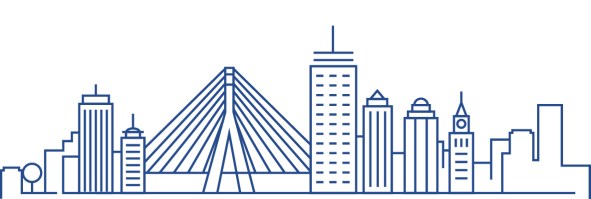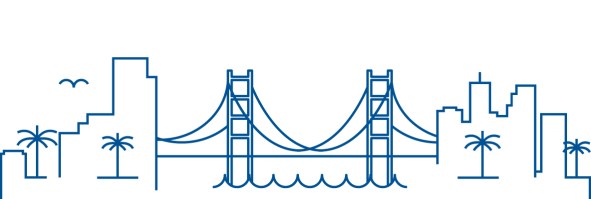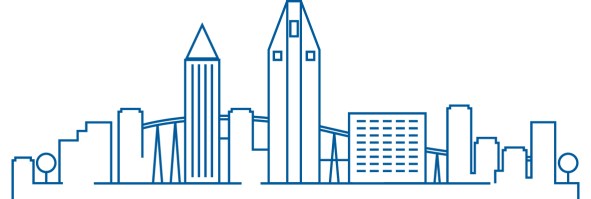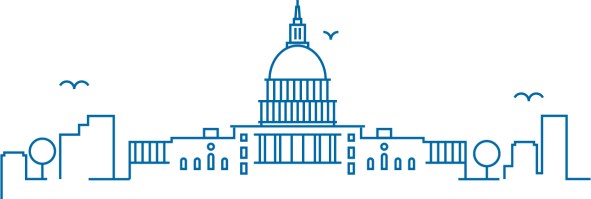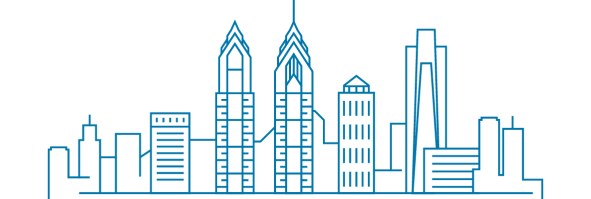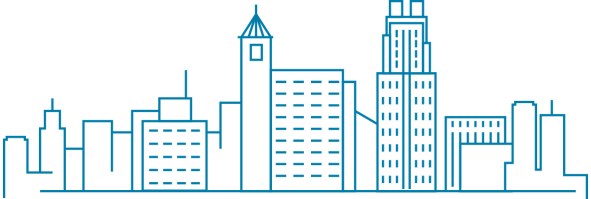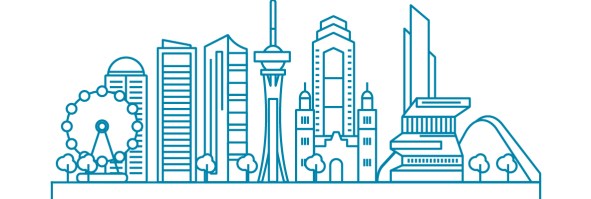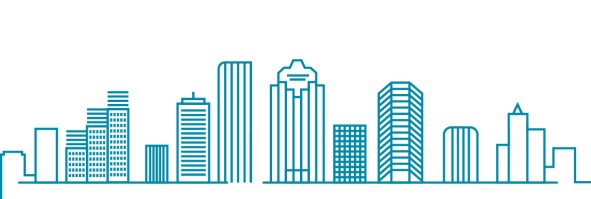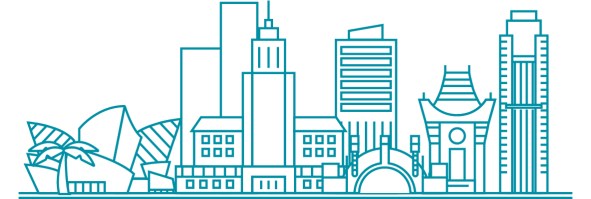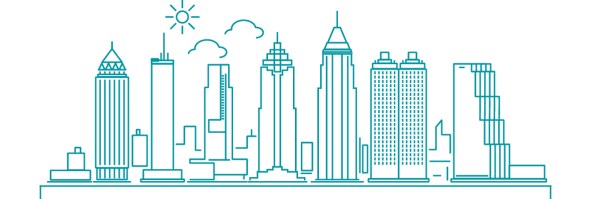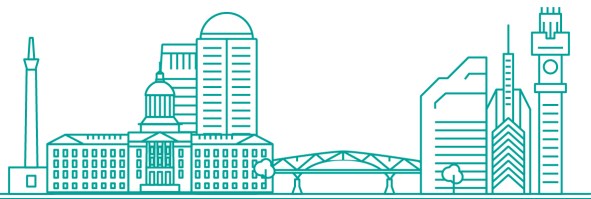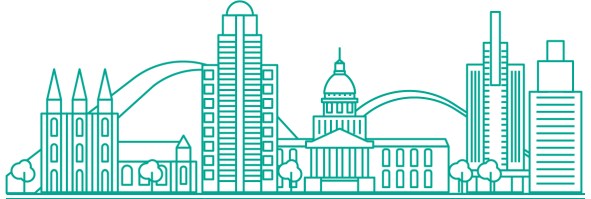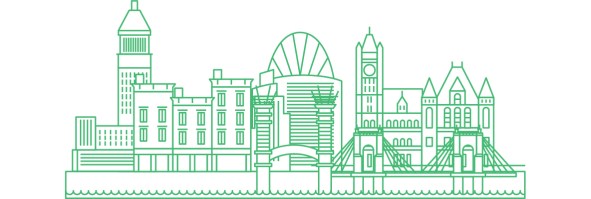Growing demand for products and services in the life sciences sector is driving an intense search — not only for talent, but also for life sciences real estate to expand existing clusters, as well as form new ones and enhance the national network. But, which U.S. metropolitan areas foster the most favorable combination of factors for a successful life sciences ecosystem?
To find out, we looked at 45 U.S. metros and assessed them across several key elements, including regional talent pool; the accessibility of commercial real estate markets; availability of dedicated property or office space that might be redeveloped to accommodate this industry; and the state of development toward expanding life sciences real estate capacity. Then, using up-to-date CommercialEdge life sciences and office market research data, as well as the most recent U.S. Census and U.S. Bureau of Labor Statistics (BLS) reports on local life sciences employment and educational attainment levels, we ranked the top 20 U.S. metros for life sciences companies to start or scale their business.
The interactive map below provides an informative overview of the 45 metropolitan areas we compared for this ranking. Read on for a detailed look at each of the 20 top-performing metros and visit the methodology section for details on all of the indicators considered.
1. Boston Metropolitan Area
The Boston metropolitan area ranked first with a total of 75.35 points out of 100 by earning top scores across several metrics. Notably, BLS data showed that the Boston life sciences labor force was the largest among the metro areas we analyzed. And, the metro also ranked sixth for life sciences educational attainment, with 840,200 of residents aged 25 years or older holding at least a bachelor’s degree in science and engineering and/or engineering-related fields.
Advantages to the real estate market were also reflected in the metro’s best scores: Specifically, the life sciences sector was represented across roughly 24.8 million square feet of office space in Boston, which made it the largest life sciences real estate market out of all of the entries in this ranking. Moreover, nearly 14 million square feet of that was LEED-certified, an indicator for which the Boston metropolitan statistical area (MSA) also earned the top score. Plus, the life sciences market here is poised for significant further expansion, with an additional 23.8 million square feet of upcoming projects currently under construction, as well as in the planned and prospective stages.
2. San Francisco Metropolitan Area
The second-best U.S. metro for life sciences companies was San Francisco, which earned a total score of 46.89 points. As you may know, the Bay Area powerhouse is home to the largest talent pool among the entries in our study (roughly 944,200 of residents aged 25 or older have earned at least a bachelor’s degree in science and engineering and/or engineering-related fields). As such, the area benefits from the third-largest life sciences workforce out of all of the metros we surveyed.
Here, nearly 7.3% of San Francisco office space was home to life sciences companies, encompassing a total of just under 13.8 million square feet — the second-largest life sciences real estate market in our ranking. Roughly 4 million square feet of that total was LEED-certified, an indicator for which the market also ranked second.
Moreover, San Francisco also performed well on the pipeline index: The 11 million square feet of new life sciences office projects in the works as of May 2022 represented the second-largest life sciences market expansion among the metros we analyzed for this ranking.
3. San Diego Metropolitan Area
In third place was the San Diego metropolitan area with a total score of 40.47 points. Its strongest suit was the sizeable share of life sciences properties out of the total office space in San Diego. In particular, the 12.3 million square feet of life sciences stock accounted for nearly 11% of the market — and the San Diego life sciences real estate market is preparing for further growth: With 4.5 million square feet of new life sciences office projects in the pipeline, the San Diego metro area is looking at a market expansion of nearly 40% of its current stock.
While the metro earned the fifth-highest score for local life sciences employment (6.19 points out of 10), it came in 14th for educational attainment: According to the latest Census data, nearly 462,000 residents aged 25 or older hold at least a bachelor’s degree in science and engineering and/or engineering-related fields.
4. New York Metropolitan Area
Ranking fourth with a total score of 33.64 points, the New York metro area shined in terms of talent pool, logging the highest score for life sciences educational attainment, as well as the second-highest total for life sciences employment. And, with nearly 2.5 million residents holding degrees in science and engineering and/or engineering-related fields, the region was also home to the largest such cohort among the metros we analyzed. What’s more, a recent report released by the NYC Department of City Planning estimated that institutions in the New York metro area yielded more life sciences graduates than any other leading metro — nearly 2,700 graduates each year.
Meanwhile, looking to build on its thriving ecosystem of talent, world-class institutions, and extensive regional transit, New York is determined to invest in meeting the needs of life sciences companies that are interested in expanding or moving to the region. Accordingly, there was 2.9 million square feet of dedicated life sciences office space in Manhattan and Queens alone, with an additional 1.4 million square feet of life sciences real estate at various stages in the pipeline, as well as more than 15 life sciences clusters across the entire metropolitan area.
5. Washington, DC Metropolitan Area
Washington, D.C. earned a total score of 33.59 points and ranked as the fifth-best U.S. metro for life sciences companies. Notably, both of its best-scoring metrics — life sciences educational attainment and a sizeable life sciences real estate pipeline — point to the significant growth potential of the region. And, with 1.1 million residents holding at least a bachelor’s degree in science and engineering and/or engineering-related fields, Washington, D.C. ranked third for educational attainment, behind only the New York and Los Angeles metropolitan areas.
Here, the life sciences sector occupied roughly 4 million square feet of office space in Washington, D.C., which accounted for just less than 1% of the local office market. The current pipeline, however, is almost twice that: Life sciences real estate currently under construction here, as well as in the planning and prospective stages, totaled nearly 7.9 million square feet and represented the third-largest projected market expansion in our ranking.
6. Chicago Metropolitan Area
Chicagoland also ranked among the top U.S. metros for life sciences companies, earning the sixth-best score in our classification (29.48 points). Educational attainment was the metro’s strongest-scoring metric, with roughly 1 million residents aged 25 or older holding at least a bachelor’s degree in science and engineering and/or engineering-related fields. Chicago scored fourth for this metric among the locations we analyzed.
The primary office market in the metropolitan area also revealed several strong points for companies in the life sciences sector that are looking for space to grow or relocate: Nearly 2.9 million square feet of Chicago office space was home to life sciences activity, which represented the ninth-largest life sciences real estate market in our ranking. And, 1.1 million of that was already LEED-certified, which placed Chicago fifth-best on our green life sciences stock index.
7. Philadelphia Metropolitan Area
With a total score of 29.07 points, Philadelphia came in seventh among the top U.S. metros for life sciences. Most of Philly’s best scores reflected strengths in its core office market. Here, life sciences developments that are currently under construction, along with those in the planning and prospective stages, totaled nearly 5.4 million square feet, which represented the fourth-largest life sciences real estate pipeline among the metros in this ranking and was Philadelphia’s best-scoring indicator.
The metro also came in sixth for existing life sciences real estate: 4.2 million square feet of Philadelphia office space accommodated the life sciences sector as of May 2022. This volume made up nearly 2% of the local office market, which represented the ninth-largest such market share among the entries in our ranking. And, because the metro is home to one of the greenest office markets in the U.S., it was not surprising to find that it ranked among the top 10 for LEED-certified life sciences office space, as well.
8. Raleigh Metropolitan Area
According to Carolina Demography, Raleigh was the second-fastest-growing large metro in the United States in 2020, behind only Austin. An integral part of the Carlina Research Triangle, Raleigh also came in eighth (right behind Philadelphia) in our ranking of best U.S. metros for life sciences with a total score of 29.06 points.
Here, too, attractive traits of the local office market carried the metro’s best-scoring indices. Specifically, the life sciences sector accounted for just more than 8% of office space in Raleigh, which represented the third-largest such market share among the metros in our ranking. This total also incorporated roughly 7.1 million square feet of life sciences real estate, of which more than 563,000 was LEED-certified (the ninth-best score for this metric).
Finally, the Raleigh-Cary metropolitan area also stood out in terms of active growth potential. At the close of May 2022, approximately 3.7 million square feet of new life sciences developments were under construction or in the planned and prospective stages in the Raleigh office market — the seventh-largest pipeline and seventh-best score for this metric among the entries in our ranking.
9. Seattle Metropolitan Area
The growing demand for life sciences real estate across the U.S. was also felt in the Puget Sound region, which has long been home to established leaders in immunotherapy — such as Juno Therapeutics and the Fred Hutchinson Cancer Research Center — as well as key global health changemakers, like The Gates Foundation and PATH. Consequently, the Seattle metro area earned a score of 27.94 points and landed ninth in our ranking of top metro choices for life sciences companies.
However, while the metro earned top 10 scores for talent metrics, its strongest suits were in the real estate market. For instance, our comparative analysis found that Seattle was home to the eighth-largest life sciences real estate pipeline among the entries in our ranking: In May, 2.8 million square feet of new life sciences development projects was under construction, as well as in the planned and prospective phases. This marked a notable future market expansion, adding to the 4.9 million square feet of existing stock (the fifth-largest life sciences market in our ranking), which represented nearly 3% of office space in Seattle. What’s more, 1.3 million square feet of local life sciences space was LEED-certified, earning Seattle the fourth-highest score for this metric.
10. Houston Metropolitan Area
Houston rounded out the top 10 U.S. metros for life sciences companies with a total score of 27.49 points, and the resilient Texas powerhouse was lifted by the wave of emerging life sciences clusters across the U.S. In particular, last year, Texas Medical Center (TMC) announced the launch of TMC3 — a 37-acre life sciences campus designed by leading Massachusetts life sciences cluster architects to support a mix of healthcare, life sciences and business users toward a vast capacity for innovation. Developers’ push to boost Houston as a competitive research hub has also included Hines’ recently topped-out phase one of Levit Green, a 53-acre, master-planned, life sciences district located next to TMC.
Even so, the life sciences sector was represented in less than 1% of Houston office space and totaled roughly 2.3 million square feet, 344,000 square feet of which was LEED-certified. Likewise, life sciences real estate projects currently in development here added up to a little more than 817,000 square feet — the 12th-largest life sciences pipeline among the entries we analyzed.
11. Los Angeles Metropolitan Area
In our ranking of top metros for life sciences business, Los Angeles landed in 11th with a total score of 25.48 points. Though not as quickly associated with the life sciences sector as metros such as Boston and San Diego, the greater Los Angeles metro area is nevertheless a strong contender due to an abundance of talent graduating from some of the country’s leading research institutions. In fact, the data we analyzed showed that Los Angeles was home to the second-largest cohort of residents aged 25 and older who hold at least a bachelor’s degree in science and engineering and/or engineering-related fields: With nearly 1.5 million locals in this category, the Los Angeles talent pool was second only to New York.
What’s more, the LA metro area has great potential to take advantage of the wave of momentum in the life sciences sector: Home to leading clinical and research hospitals; world-class research universities; a resilient manufacturing base; and a significant venture capital presence, the metro needs to explore ways to expand life sciences incubator and development space. To that end, CommercialEdge data showed that life sciences real estate accounted for less than 1% of inventory in the metro area’s primary office market, or roughly 1 million square feet of Los Angeles office space. And, projects in the pipeline comprised nearly 900,000 square feet of new life sciences development — the 11th-largest pipeline among the entries in our ranking.
12. Atlanta Metropolitan Area
Atlanta scored a total of 23.8 points and ranked 12th-best for life sciences companies. The birthplace of the CDC in 1942, the city has certainly been no stranger to the importance of the life sciences sector for the past 80 years. In fact, Atlanta is one of relatively few cities that have amassed what are generally considered to be all of the vital elements of a successful life sciences ecosystem: both corporate and nonprofit investors in development of new technologies; sophisticated supply-chain management that ensures global access; world-class universities, such as Georgia Tech, Emory University, and the University of Georgia, which are all established and highly respected catalysts in both technology and life sciences; and a highly educated and diverse workforce — a metric for which Atlanta earned the 10th-best score in our ranking.
However, recent statements by Metro Atlanta Chamber representatives confirmed that, while that abundance had indeed attracted significant interest from life sciences companies to expand in or relocate to Atlanta, not enough life sciences real estate had been developed yet to accommodate them. But, that setback is well on course for correction. In fact, data showed that the metro area’s primary office market was home to the sixth-largest life sciences pipeline among the entries in our ranking: In May 2022, there were nearly 4.2 million square feet of new life sciences development projects under construction, as well as in the planned and prospective phases. This represented a sizeable market expansion, adding to the 424,000 square feet of existing life sciences stock, which accounts for less than 1% of office space in Atlanta.
13. Detroit Metropolitan Area
The revitalization of Detroit continues to be one of the most successful Rust Belt comeback stories. The area has seen significant progress in urban sustainability, rising workforce educational attainment levels, steady reduction of unemployment, and several high-profile corporate headquarters relocations to the city. Plus, Detroit’s efforts to reinvent itself as a hub for innovation have also resulted in it ranking among the top U.S. cities for women working in STEM, as well as its recognition as one of the top emerging clusters for life sciences in 2020.
In our current ranking, Detroit earned a total score of 21.85 points and placed 13th among the top U.S. metros for life sciences companies. In particular, the area benefits from its regional colleges and universities, foremost of which is the University of Michigan, which has been lauded by the National Science Foundation as a top public research university in the U.S. As such, the metro area was home to nearly 450,000 residents aged 25 years or older who earned at least a bachelor’s degree in science and engineering and/or engineering-related fields. This number placed Detroit 16th for educational attainment among the 45 metros we compared for this ranking.
While the metro earned lower scores across most of the office and life sciences real estate metrics category, recent data on office space in Detroit placed the metro 10th for affordability by average asking rate, as well as second for office space availability measured by average vacancy rate.
14. Baltimore Metropolitan Area
With unparalleled access to federal resources; world-class, life sciences-focused higher learning institutions; and a superior ecosystem of public and private investment resources, it’s not surprising to find Baltimore among the top metros for life sciences in the U.S. With a total score of 21.21 points, Baltimore placed 14th in our ranking.
Located in the greater capital market region of Washington, D.C., Baltimore is reportedly one of the hottest emerging medical technology markets in the country. Supported by regional institutions like Johns Hopkins University and the University of Maryland, Baltimore boasts an educated talent pool of nearly 400,000 residents with at least a bachelor’s degree in science and engineering and/or engineering-related fields.
Meanwhile, the roughly 2 million square feet of existing life sciences real estate accounted for nearly 2% of office space in Baltimore and was about 40% LEED-certified (747,000 square feet). Notably, office market accessibility here was relatively better than markets higher up in the ranking: Baltimore ranked among the 20 most affordable metros on the list (by average asking rate).
15. Salt Lake City Metropolitan Area
Another strong contender among emerging clusters in the U.S., the Salt Lake City metropolitan area ranked 15th among top metros for life science companies, with a total score of 21.01 points. According to CommercialSearch industry news, there were more than 70 leading bio- and med-tech companies with a presence in Utah last year. And, banking on the power of community, more than 1,100 companies operating in the metro region’s life sciences and healthcare innovation ecosystem came together and recently formed BioHive — a collective that seeks to serve as an industry advocate and boost the growth of Utah’s own thriving life sciences cluster.
Salt Lake City was the 14th-largest life sciences real estate market among the 45 entries we compared for this ranking. Totaling 1.5 million square feet, local life sciences stock accounted for nearly 2% of office space in Salt Lake City and included approximately 305,000 square feet of LEED-certified property. Also one of the most accessible office markets on the list, SLC landed among the 20 most affordable markets by average asking rate, as well as third for average vacancy rate in local office space.
16. Dallas-Fort Worth Metropolitan Area
In 16th place was the Dallas-Fort Worth metropolitan area — the second Texas entry to rank among the top 20 U.S. metros for life sciences in 2022 with a total score of 20.6 points. The metroplex’s strongest metrics reflected a sizeable talent pool and a relatively accessible office market.
In particular, 744,000 residents aged 25 years or older hold at least a bachelor’s degree in science and engineering and/or engineering-related fields — an educational attainment indicator for which DFW scored seventh-best. In terms of life sciences real estate-related barriers to entry, the Dallas-Fort Worth metroplex scored 10th for average vacancy rate. It was also 15th-most affordable by average asking rate for office space in the market.
As a result, the unique mixed bag of regional advantages has attracted brands like BioLabs, which chose Dallas office and coworking space for its ninth location. It’s the life sciences coworking space provider’s first startup incubator location in the heartland.
17. Minneapolis-St. Paul Metropolitan Area
According to the Minneapolis-Saint Paul Regional Economic Development Partnership (Greater MSP), the Twin Cities metro area is a global hub of life sciences innovation and commercialization, home to more than 750 health and life sciences companies and the highest density of medical device jobs in the country. At the same time, the area also claims some of the lowest operating costs among life sciences clusters in the U.S.
In our ranking, the Minneapolis-St. Paul metro area earned a total score of 20.42 points and landed 17th among the country’s top life sciences real estate markets. The highest-scoring metrics for the Minnesota entry reflected its comparatively lower average asking rents (8.62 points out of 10 for affordability of office space in Minneapolis-St. Paul) and life sciences employment, an indicator for which the metro received the 10th-best score.
Moreover, life sciences educational attainment levels placed the Twin Cities region among the 15 most educated talent pools in our ranking: More than 460,000 area residents aged 25 years or older hold a bachelor’s degree in science and engineering and/or engineering-related fields.
18. Denver Metropolitan Area
The Denver metropolitan area has been steadily establishing itself as an important hub of innovation and has consistently ranked among the top cities for startups in the U.S. Although not as synonymous with life sciences as markets positioned higher in our ranking, Denver has been a growing area of interest since at least 2016, when major biopharma companies had already established a notable presence in the region.
With a total score of 20.02 points, Denver placed 18th in our ranking of top U.S. metros for life sciences research and businesses. Similar to other metropolitan areas at this end of the rankings, the Denver-Aurora-Lakewood MSA earned its highest scores for the accessibility of its office market: 5.81 points out of 10 for average vacancy rate and 7.8 points out of 10 for average office asking rate.
Similarly, the Denver metro was the 11th-largest life sciences real estate market among the 45 entries we compared for this ranking. Totaling 2.2 million square feet, local life sciences stock accounted for nearly 1.2% of office space in Denver and included nearly 112,000 square feet of LEED-certified property.
19. Cincinnati Metropolitan Area
A 2009 University of Cincinnati study researching the growth of the biotechnology sector in typical American metropolitan areas noted that Cincinnati was a case study for life sciences hub generation. Interestingly, this was due to its entrepreneurial ties with universities and research hospitals, rather than organic gravitation toward natural advantages found in the region. A decade later, a 2019 CBRE report tracking U.S. life sciences clusters positioned for long-term growth ranked Cincinnati among the top 20 markets for life sciences talent.
In our current ranking, Cincinnati placed 19th with an overall score of 19.16 points and stood out as home to one of the most accessible office markets among the entries we compared. In particular, Cincinnati office space ranked second-most affordable with a score of 9.94 points out of 10 for the average asking rate indicator. The market also ranked seventh by average vacancy rate. But, as demand for life sciences real estate grows in all hubs across the country, Cincy might be challenged by a lack of lab space in the coming years. The nearly 235,000 million square feet of existing life sciences properties accounted for less than 1% of the local office market. It’s worth noting, though, that life sciences stock here was about 57% LEED-certified (132,764 square feet).
20. Kansas City Metropolitan Area
Kansas City continues to carve out its place among top destinations for innovative industries. Straddling the two states of Missouri and Kansas, this metro area is home to major universities and research institutes that have contributed greatly to it ranking among the best cities for startups in the U.S., thanks to high startup growth rate and density, as well as notable growth in tech employment.
In this year’s ranking, KC rounded out the top 20 U.S. metros for life sciences with a total score of 18.41 points. The metro also stood out as one of the 15 largest life sciences real estate markets among the 45 metros we compared. Totaling 1.5 million square feet, local life sciences stock accounted for nearly 2% of Kansas City office space — the 11th-largest market share in our ranking — and included nearly 322,000 square feet of LEED-certified property.
Methodology
For this report, we ranked 45 metropolitan statistical areas by eight metrics (indicators) across two categories: talent pool and the local office market. We considered local life sciences employment and local life sciences educational attainment as the most relevant talent pool indicators. In the life sciences office market category, we scored data on: existing life sciences square footage in the market; the share that this accounted for within the overall local office market; how much life sciences square footage was LEED-certified; how much new life sciences property was currently in the pipeline in each metro area; the most recent local average office asking rates; and the most recent data on the average vacancy rate in each of the metros we analyzed.
For each metric, the number of maximum points was evenly distributed between the lowest and the highest metric values. On this scale, a score was calculated for each city based on its metric values. The factors (metrics) on which we based the composite scores are explained below. For average office asking rates, the number of points awarded was inversely proportional to the metric values. For all other indicators, the number of points awarded was directly proportional to the metric values.
For “Local Life Sciences Employment,” we considered the number of people employed locally in relevant professions (listed below) as per the latest Occupational Employment and Wage Statistics (OEWS) report released by the U.S. Bureau of Labor Statistics in May 2021:
- Animal Scientists (SOC Code191011)
- Food Scientists and Technologists (SOC Code191012)
- Biochemists and Biophysicists (SOC Code191021)
- Soil and Plant Scientists (SOC Code191013)
- Foresters (SOC Code191032)
- Conservation Scientists (SOC Code191031)
- Medical Scientists, Except Epidemiologists (SOC Code191042)
- Epidemiologists (SOC Code191041)
- Life Scientists, All Other (SOC Code191099)
- Microbiologist (SOC Code191022)
- Zoologists and Wildlife Biologists (SOC Code191023)
- Biological Scientists, All Other (SOC Code191029)
Where data was not available, the value was defaulted to zero. The maximum weight for this metric was 15 points.
For “Life Science Educational Attainment,” we looked at the number of people holding at least a bachelor’s degree in Science and Engineering and Science and Engineering-Related Fields, as per the U.S. Census 2020 S1502 5YR table. The maximum weight for this metric was 15 points.
For “Life Science Square Feet Total,” we turned to CommercialEdge research data on office properties of at least 25,000 square feet in size and included the square footage representing laboratory and support facilities in properties that were home to pharmaceutical industry operations, contract research organizations, biotech firms, contract manufacturing, medical device companies and the genomics industry. For this metric, New York MSA data referred to Manhattan and Queens. The maximum weight for this metric was 15 points.
We also used CommercialEdge research data to estimate the “% of Office Market Total” that life sciences office space accounted for within the total office inventory of the primary office market in each metropolitan area. For this metric, New York MSA data referred to Manhattan and Queens. The maximum weight for this metric was 10 points.
Under “Life Science LEED Square Feet,” we included all LEED-certified life sciences office square footage in the market, as defined above and tracked by CommercialEdge. For this metric, New York MSA data referred to Manhattan and Queens. The maximum weight for this metric was 10 points.
The “Office Asking Rate” and “Office Vacancy Rate” represented May 2022 average asking rates and vacancy rates, respectively, for all office properties, as tracked in each market. Values for this metric were as of June 1, 2022. New York MSA data referred to Manhattan and might reflect averages different than elsewhere in the metro. The maximum weight for each of these two indicators was 10 points.
Under “Life Science Pipeline,” we included the collective square footage of life sciences office projects that were prospective, planned and under construction in each of the metros we analyzed. For this metric, New York MSA data referred to Manhattan and Queens. The maximum weight for this metric was 15 points.
Ranking Scores for the Top U.S. Metropolitan Areas for Life Sciences Companies in 2022
The metropolitan areas in the table below are presented in decreasing order of total point score. Use the horizontal scroll feature to view data in all columns. See the article methodology for further details.Data sources: U.S. Census Bureau, U.S. Bureau of Labor Statistics, and CommercialEdge Research.
| Rank | MSA | Total Score | Life Science Employment (max. pts: 15) | Life Science Educational Attainment (max. pts: 15) | Life Science SqFt Total (max. pts: 15) | % of Office Market Total (max. pts: 10) | Life Science LEED SqFt (max. pts: 10) | Average Office Asking Rate (max. pts: 10) | Average Office Vacancy Rate (max. pts: 10) | Life Science Pipeline (max. pts: 15) |
|---|---|---|---|---|---|---|---|---|---|---|
| 1 | Boston-Cambridge-Newton, MA-NH | 75.35 pts | 15.00 | 4.74 | 15.00 | 7.83 | 10.00 | 6.19 | 1.60 | 15.00 |
| 2 | San Francisco-Oakland-Berkeley, CA | 46.89 pts | 8.86 | 5.39 | 8.30 | 6.61 | 2.97 | 1.94 | 5.80 | 7.01 |
| 3 | San Diego-Chula Vista-Carlsbad, CA | 40.47 pts | 6.19 | 2.34 | 7.40 | 10.00 | 2.67 | 5.87 | 3.15 | 2.85 |
| 4 | New York-Newark-Jersey City, NY-NJ-PA | 33.64 pts | 11.33 | 15.00 | 1.72 | 0.40 | 0.26 | 0.00 | 4.03 | 0.89 |
| 5 | Washington-Arlington-Alexandria, DC-VA-MD-WV | 33.59 pts | 8.16 | 6.66 | 2.39 | 0.78 | 0.05 | 6.02 | 4.57 | 4.96 |
| 6 | Chicago-Naperville-Elgin, IL-IN-WI | 29.48 pts | 3.97 | 6.30 | 1.71 | 0.64 | 0.85 | 8.32 | 7.20 | 0.49 |
| 7 | Philadelphia-Camden-Wilmington, PA-NJ-DE-MD | 29.07 pts | 5.79 | 4.08 | 2.52 | 1.69 | 0.35 | 8.08 | 3.17 | 3.40 |
| 8 | Raleigh-Cary, NC | 29.06 pts | 1.37 | 0.81 | 4.27 | 7.28 | 0.41 | 8.02 | 4.58 | 2.32 |
| 9 | Seattle-Tacoma-Bellevue, WA | 27.91 pts | 4.77 | 3.44 | 2.93 | 2.41 | 0.95 | 6.67 | 4.96 | 1.78 |
| 10 | Houston-The Woodlands-Sugar Land, TX | 27.49 pts | 2.95 | 4.06 | 1.38 | 0.69 | 0.25 | 7.64 | 10.00 | 0.52 |
| 11 | Los Angeles-Long Beach-Anaheim, CA | 25.48 pts | 5.63 | 8.66 | 0.61 | 0.20 | 0.71 | 5.63 | 3.45 | 0.56 |
| 12 | Atlanta-Sandy Springs-Alpharetta, GA | 23.80 pts | 1.80 | 3.66 | 0.22 | 0.07 | 0.15 | 7.91 | 7.35 | 2.63 |
| 13 | Detroit-Warren-Dearborn, MI | 21.85 pts | 0.89 | 2.26 | 0.29 | 0.21 | 0.20 | 9.49 | 8.42 | 0.08 |
| 14 | Baltimore-Columbia-Towson, MD | 21.21 pts | 2.53 | 1.88 | 1.18 | 1.65 | 0.54 | 8.84 | 4.13 | 0.46 |
| 15 | Salt Lake City, UT | 21.01 pts | 1.25 | 0.24 | 0.90 | 1.69 | 0.22 | 8.82 | 7.89 | 0.00 |
| 16 | Dallas-Fort Worth-Arlington, TX | 20.60 pts | 1.82 | 4.13 | 0.26 | 0.04 | 0.00 | 7.99 | 6.27 | 0.09 |
| 17 | Minneapolis-St. Paul-Bloomington, MN-WI | 20.42 pts | 3.72 | 2.35 | 1.20 | 1.07 | 0.00 | 8.62 | 3.46 | 0.00 |
| 18 | Denver-Aurora-Lakewood, CO | 20.02 pts | 1.77 | 2.10 | 1.32 | 1.00 | 0.08 | 7.80 | 5.81 | 0.14 |
| 19 | Cincinnati, OH | 19.16 pts | 0.70 | 0.82 | 0.10 | 0.23 | 0.10 | 9.94 | 7.27 | 0.00 |
| 20 | Kansas City, MO | 18.41 pts | 0.96 | 0.81 | 0.87 | 1.59 | 0.23 | 9.43 | 4.41 | 0.12 |
| 21 | Saint Louis, MO | 17.88 pts | 0.40 | 1.24 | 0.61 | 1.09 | 0.23 | 9.18 | 5.14 | 0.00 |
| 22 | Pittsburgh, PA | 17.67 pts | 0.91 | 1.15 | 0.37 | 0.62 | 0.00 | 8.62 | 6.01 | 0.00 |
| 23 | Milwaukee-Waukesha, WI | 17.54 pts | 0.41 | 0.46 | 0.00 | 0.00 | 0.00 | 9.33 | 7.34 | 0.00 |
| 24 | Columbus, OH | 17.38 pts | 0.59 | 0.90 | 0.44 | 0.83 | 0.03 | 9.67 | 4.26 | 0.65 |
| 25 | Jacksonville, FL | 17.33 pts | 0.09 | 0.34 | 0.01 | 0.08 | 0.06 | 9.38 | 7.38 | 0.00 |
| 26 | Sacramento-Roseville-Folsom, CA | 17.28 pts | 1.51 | 1.13 | 0.14 | 0.22 | 0.00 | 8.67 | 5.30 | 0.32 |
| 27 | Phoenix-Mesa-Chandler, AZ | 17.16 pts | 0.81 | 2.29 | 0.71 | 0.66 | 0.28 | 8.41 | 4.00 | 0.00 |
| 28 | Indianapolis-Carmel-Anderson, IN | 16.75 pts | 0.56 | 0.74 | 0.34 | 0.75 | 0.00 | 9.57 | 4.78 | 0.00 |
| 29 | San Antonio-New Braunfels, TX | 16.69 pts | 0.54 | 0.72 | 0.07 | 0.16 | 0.00 | 8.70 | 6.46 | 0.05 |
| 30 | Portland-Vancouver-Hillsboro, OR-WA | 16.29 pts | 1.81 | 1.59 | 0.40 | 0.76 | 0.45 | 8.22 | 2.87 | 0.20 |
| 31 | Bridgeport-Stamford-Norwalk, CT | 15.99 pts | 0.15 | 0.28 | 0.60 | 0.82 | 0.00 | 7.87 | 5.94 | 0.33 |
| 32 | Oklahoma City, OK | 15.33 pts | 0.33 | 0.14 | 0.23 | 1.05 | 0.00 | 10.00 | 3.32 | 0.25 |
| 33 | Tampa-St. Petersburg-Clearwater, FL | 15.30 pts | 0.70 | 1.36 | 0.18 | 0.31 | 0.16 | 8.24 | 4.34 | 0.00 |
| 34 | Orlando-Kissimmee-Sanford, FL | 15.24 pts | 0.27 | 0.98 | 0.05 | 0.10 | 0.04 | 9.10 | 4.71 | 0.00 |
| 35 | Birmingham-Hoover, AL | 14.35 pts | 0.16 | 0.02 | 0.09 | 0.49 | 0.00 | 9.54 | 4.04 | 0.00 |
| 36 | Grand Rapids-Kentwood, MI | 13.99 pts | 0.09 | 0.01 | 0.35 | 2.08 | 0.00 | 9.24 | 2.23 | 0.00 |
| 37 | Austin-Round Rock-Georgetown, TX | 13.80 pts | 0.96 | 1.37 | 0.36 | 0.48 | 0.11 | 5.16 | 5.29 | 0.06 |
| 38 | Rochester, NY | 13.74 pts | 0.01 | 0.20 | 0.65 | 3.21 | 0.00 | 9.68 | 0.00 | 0.00 |
| 39 | Charlotte-Concord-Gastonia, NC | 13.61 pts | 0.20 | 1.05 | 0.28 | 0.46 | 0.00 | 7.24 | 4.38 | 0.00 |
| 40 | Cleveland-Elyria, OH | 13.59 pts | 0.00 | 0.67 | 0.12 | 0.17 | 0.04 | 9.64 | 2.96 | 0.00 |
| 41 | Miami-Fort Lauderdale-Pompano Beach, FL | 13.33 pts | 1.31 | 3.30 | 0.33 | 0.56 | 0.19 | 4.72 | 2.93 | 0.00 |
| 42 | Richmond, VA | 12.82 pts | 0.45 | 0.37 | 0.22 | 0.43 | 0.00 | 9.15 | 2.13 | 0.08 |
| 43 | New Orleans-Metairie, LA | 12.26 pts | 0.04 | 0.15 | 0.00 | 0.13 | 0.05 | 9.55 | 2.35 | 0.00 |
| 44 | Buffalo-Cheektowaga, NY | 12.11 pts | 0.38 | 0.15 | 0.07 | 0.45 | 0.08 | 9.84 | 1.15 | 0.00 |
| 45 | Omaha-Council Bluffs, NE-IA | 11.54 pts | 0.37 | 0.00 | 0.03 | 0.15 | 0.00 | 8.83 | 2.16 | 0.00 |
Disclaimer
While every effort was made to ensure the timeliness and accuracy of the information presented herein, the information is provided “as is” and neither CommercialCafe nor CommercialEdge can guarantee that the information provided is complete. This report is for general informational purposes only. It does not constitute and should not be relied upon as a basis for any investment decision. The information presented is subject to change without notice and may or may not apply depending on the circumstances. Always contact a qualified investment consultant if you need advice regarding buying, selling or otherwise transacting in any investment.


